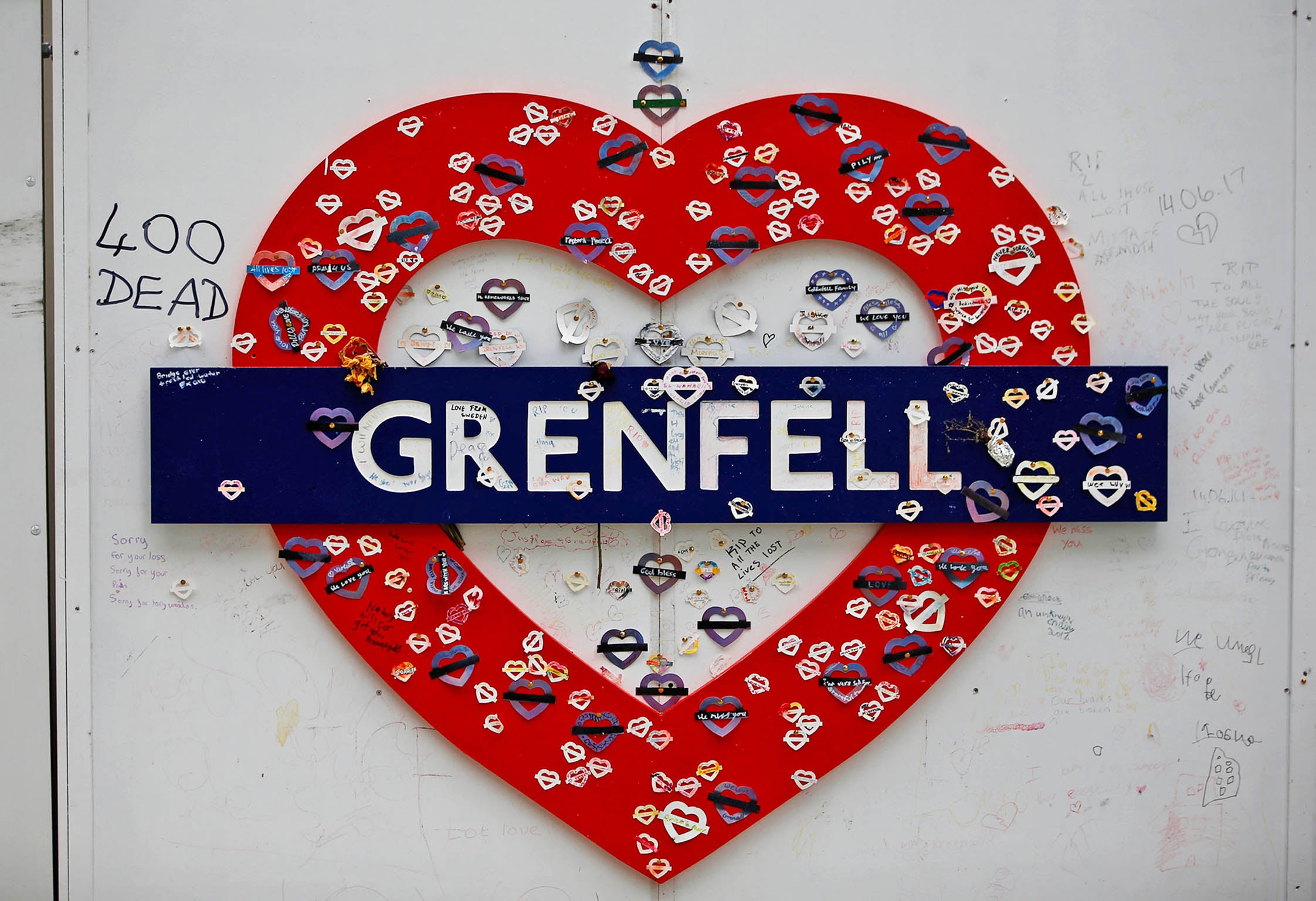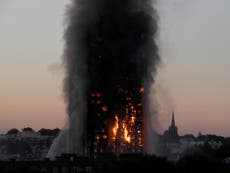I grew up poor in Kensington and on the night of the fire, I watched Grenfell Tower burn. I'm still angry
Suddenly I woke to the sound of thumping on the roof of our attic flat. I now know that was the cladding

My Kensington and Chelsea upbringing was not wealthy, but my childhood was cosmopolitan and full of opportunities. Notting Hill was in the earlier stages of gentrification in the Nineties, the population having moved from artists and musicians into the “doctors and lawyers” phase. I went to state schools which celebrated diversity and multiculturalism. Now, the area’s gentrification has gone full oligarch and my old schools’ catchment areas make them almost impossible for poorer students to access.
At Fox Primary School, we were taught steel pan by internationally acclaimed, award-winning musician Michael “Bubbles” Olivier, and had a float at Notting Hill Carnival every year. Local businesses clubbed together to buy us a computer room with 30 jewel-coloured iMacs, and chairs made of giant primary-coloured bouncy balls in little metal frames. We learnt the word “ergonomic”. Essentially, we were granted the many privileges of a fancy Notting Hill childhood with none of the price tags.
Now the catchment area for Fox has been touted as the tightest in the country, reportedly a meagre 107 yards. “Put your wallet away,” Tatler proclaimed in a recent education guide, imploring parents to embrace the state school. “Sometimes, the best choice isn’t the most expensive one.”
But with Zoopla quoting the current average price of the prerequisite home on Edge Street as £2,046,588, that wallet would need to be quite seriously out and open. At the end of Year 6, many of my friends pootled off to open days at St Paul’s and Godolphin, and the rest of us found ourselves enrolled at Holland Park School, the comprehensive down the road.
If socioeconomic schisms had been glossed over by Fox’s preternaturally nurturing education, Holland Park came like a sort of gallivanting extravaganza of inequality. It believed itself to be the most multicultural school in the country, and was immensely proud. Aristocrats mingled with gang members, and a team of dedicated longstanding teachers attempted to steer us all towards some kind of future. Holland Park was in the process of swiftly ridding itself of these extraordinary teachers while I was there, and has now changed its catchment area too.
A new school, Kensington Aldridge Academy, has been built in the poorer part of the borough, right by Grenfell Tower. The new school (thankfully) is by all accounts a brilliant place for the students, but the borough’s decision is broadly viewed by the community as social cleansing – keep Holland Park with its extortionate new building and charming setting for the well-heeled, and send the rest to the new school. In making these decisions, the borough can only be damaging the integration the area had worked so hard for following on from 1958’s race riots, and the consequent founding of Carnival.
When I was at Holland Park, many of my peers lived in Grenfell Tower – and some still did until the night when the fire happened.
Some time after 1am on 14 June last year, mysterious thumpings began on the roof of my mum’s attic flat. As the cacophony of sirens started blaring through the neighbourhood, I took to Twitter to work out what could possibly be happening. Of course, it was the flammable cladding of Grenfell Tower thumping against the roof; I was in no danger at all, but very, very nearby the fire would kill 72 and destroy the lives of innumerably more. Many residents in the tower, where alarms were failing to sound as the fire cascaded up the building, would still have been asleep.
I didn’t believe anyone could survive; from where we were, it looked like the entire lower part of the building was engulfed. As I ventured outside, a woman came past, running away from the tower and shouting in indescribable horror: “There are people jumping, there are faces at the windows, people are trying to throw their children. Don’t go.”
Meanwhile, vehicles were streaming past, bikes, people, running closer: “Is it Grenfell? Is it Grenfell Tower? My best friend lives in there. My aunt. My brother. My friends.”
After dawn, I was under the Westway with two distraught men; the sister of one of them had last heard from her husband, Tony, on the 22nd floor many hours before. I couldn’t understand that it was real – but Anthony Disson, from the 22nd floor, was among the missing the next day, and was later confirmed dead. His desperate final phone calls to his family were reported upon in the media a few days after he died.
I knew, we all knew, the people watching that night, about the Grenfell Action Group. I hadn’t paid much attention, but my mum had been looking at moving to nearby Testerton Walk, adjacent to Grenfell Tower, and kept up to date with the local residents’ associations.
It is stunning to think that every single person I spoke to in the street that night when I watched Grenfell Tower burn was discussing the refurbishment that had made the building unsafe. These people realised long before it was suggested in any publication that the cladding wafting through the air and lining the streets around them was at least in part responsible for the fire.
Although the knowledge that these residents had been failed by the state zipped through the community, it was impossible to imagine how much, a year on, those failures would have been compounded.
Traumatised families continue to live in substandard bed and breakfasts; innocent and suffering Behailu Kebede, the owner of the flat where the fire originally broke out, has been repeatedly portrayed as a villain who “packed his bags before leaving”; Theresa May has quietly reneged on so many promises it’s a struggle to keep track.
As the inquiry moves forward and the year anniversary approaches, the community continues to hold silent marches month on month, a powerfully moving tribute to behold as well as a salient reminder of a lack of justice and closure.
The Kensington and Chelsea I was raised in felt like it celebrated and championed equality and diversity. Today, I feel like I live in a shameful borough, but alongside a community which will continue to stand its ground.


Join our commenting forum
Join thought-provoking conversations, follow other Independent readers and see their replies